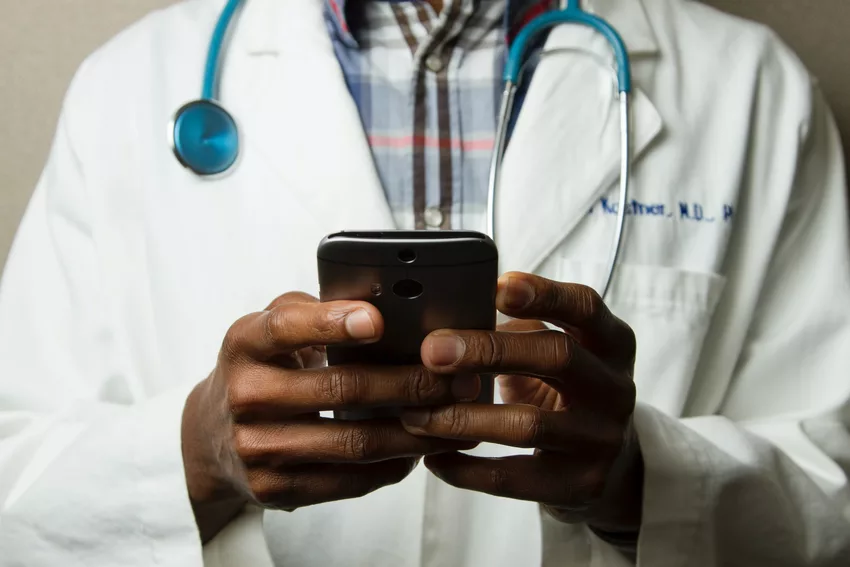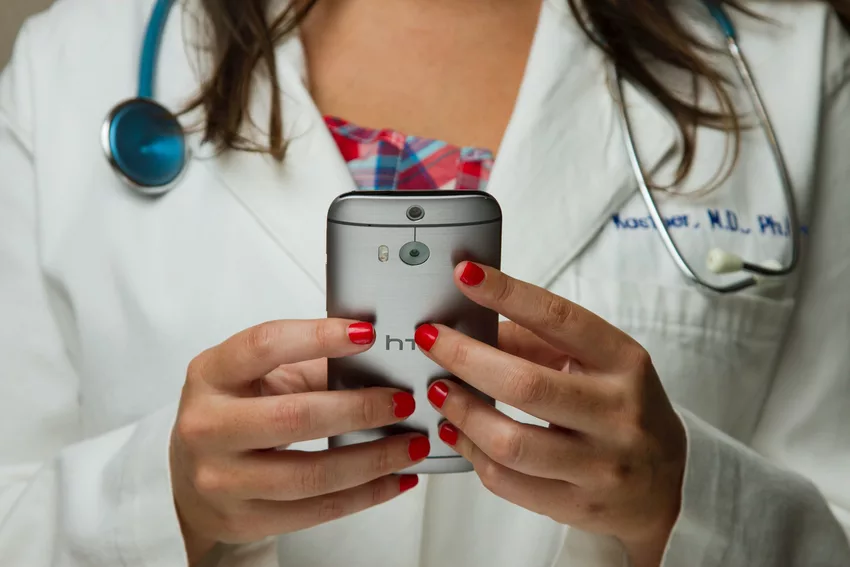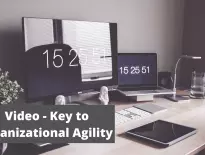Health advocacy associations can improve collaboration and compliance by utilizing the right enterprise video hosting solution.

Source: Unsplash
The healthcare industry relies on a complex network of healthcare advocacy associations to identify values and drive innovation towards improved patient outcomes. These values span the spectrum from technical and social betterment to moral and ethical improvement, giving healthcare practitioners the resources they need to push healthcare standards higher.
Are you sharing your Video Content the right way, to gain the most from it?
Effective communication is a cornerstone of healthcare advocacy. It’s not enough to conduct research and create strategic partnerships with public and private organizations. Advocacy groups need to communicate their findings to stakeholders and the general public in a clear and memorable way.
How Advocacy Association use Video Hosting Solution

Source: Unsplash
Health Advocacy organizations can leverage the video content in order to push content from one group to another.
The ultimate Video platform solution should provide you VOD (Video-On-Demand), Linear TV (Prerecorded scheduling event), and Live Streaming on the same platform. Health Advocacy should have a dedicated page (Account site) for physicians and doctors to consume and watch your content, coming from a medical company or an authority professional.
Medical professionals can log in to a specific page through a secure portal to watch the Live Stream or healthcare conference provided by the advocacy association.
For example, Healthcare professionals in your advocacy network can be notified about a pre-recorded event or a video conference that will provide a regulation update every Tuesday at 9 am (EST). This can be achieved through secure video solutions platforms, with the added benefit of the event being secured through a password protected login process or domain locking the event.
The technological landscape that patients, doctors, healthcare organizations, hospitals and government navigate is becoming more complex. Healthcare advocacy organizations have to adapt their messaging to meet the demands of today’s media environment. For many, this means embracing the use of video, and finding a compliant healthcare video solution to host their content.
Why should health advocacy associations utilize video solutions?
The effectiveness of an advocacy group is entirely dependent on its ability to communicate. Advocacy groups need to communicate with doctors, insurers, pharmaceutical companies, patients, and more. In many cases, they unite all of these different healthcare industry participants under a single, coherent banner.
This kind of communication relies on credibility and trust. Problematically, the general public does not easily extend trust to large healthcare organizations. A 2018 Deloitte survey placed pharmaceutical companies second-to-last on a list of trustworthy sources of information – just above social media networking platforms.
Rising prescription drug costs, an ongoing opioid epidemic, and destructive political scandals have eroded public trust in the healthcare sector generally. Under these conditions, patient-focused advocacy groups play an increasingly vital role re-establishing credibility in institutions that save peoples’ lives.
This is important because video is consistently rated the most trustworthy content format available in today’s media landscape. Video delivers on trust, which helps healthcare advocacy groups perform the critical task of coordinating healthcare industry participants towards positive patient outcomes.
Healthcare advocacy groups that equip themselves with high-quality video content are able to achieve their goals faster and more effectively than those that rely exclusively on print. Broadcasting video content – whether on television, online, or through OTT apps – is crucial to advocacy success.
Video helps advocates forge relationships with every group in the industry

Source: Unsplash
Advocacy groups help healthcare sector participants take a holistic, patient-centric view of the problems they seek to solve. Many of these groups rely on advocacy groups to conduct research and deliver pertinent, accurate data about the diseases and conditions they focus on.
For advocacy groups to be effective, they need to forge patient-centric relationships with every stakeholder in the healthcare industry. Video helps these groups establish trust in a unique way for every group:
- Pharmaceutical Companies. Pharmaceutical manufacturers often exclude patients who don’t use their products from their messaging. Health advocacy groups have an excellent opportunity to step in and deliver a patient-centric viewpoint that goes beyond the pharma brand, giving patients the resources and tools they need to effectively manage their disease.
- Health Insurers. Patients and caregivers spend a great deal of time and energy trying to understand health insurance guidelines. Advocacy groups offer patients a streamlined way to find and act on data that applies to them. This helps health insurers by reducing misunderstandings and lowering the frequency of support requests.
- Hospitals. Hospitals rely on health advocates to develop protocols that serve patients’ needs. Trust is critical in this endeavor because hospital administrators have to juggle a large number of conflicting interests while identifying the best path forward.
- Providers. Doctors need patient advocacy groups to raise awareness of diseases and educate their patients to increase treatment compliance. Without doctors on your side, advocacy is severely limited and patient compliance is compromised.
- Patients. Healthcare advocacy organizations offer patients education on the illnesses they suffer from. Patient outreach is one of the most important elements to the advocacy awareness campaign, and one of the major ways organizations inspire grassroots support for research funding and legislative change.
Video helps patient advocacy groups broadcast a reputable and trustworthy brand to each of these groups. It supports the credibility that advocacy groups have and allows them to help improve the healthcare system more effectively.
In order to do this, advocacy associations need to invest in a healthcare video solution that is robust, compliant, and secure. A high-performance HIPAA-compliance video platform helps health advocate groups communicate effectively and make good use of their branded materials.
What is a Healthcare video solution?

Source: Unsplash
A healthcare video solution has to combine digital asset management (DAM) with medical video conferencing capabilities and HIPAA-compliant security features. This enables healthcare organizations to communicate internally and externally without jeopardizing efficiency or credibility through enterprise video hosting solution.
Not all enterprise video hosting solutions can deliver on these promises. The typical enterprise video solution is not fit for HIPAA-compliant conferencing capability.
Those tend to be positioned for different markets, with feature sets that don’t map well to what healthcare advocates need. Often, healthcare advocates that opt for a regular enterprise video solution end up paying for features they never use.
On the other end of the spectrum, telemedicine providers have long occupied a niche in the larger healthcare video solution market, but these solutions fail to deliver on many of the requirements that health advocate organizations have.
It’s not enough to deliver secure medical conferencing infrastructure. Video providers must also provide analytics and in-player content features that help advocacy groups distribute public messaging. These are features that advocacy groups demand, but that healthcare video vendors rarely offer.
8 ways that healthcare advocacy associations should use an enterprise video hosting solution for their communication
1. Secure and encrypted video hosting
Healthcare advocates need to know how to protect video content from unauthorized access. Password-protected video capabilities, domain-locking features, and encryption are must-have features when creating content that may include sensitive patient data.
Healthcare advocate groups need to invest in greater security measures than non-profit organizations in other sectors. One of the main driving forces behind this need is the steep rise in the frequency and severity of ransomware attacks in the healthcare industry. Unsecured video content is a vital weakness that allows cyber criminals access to information they can use against you.
While ransomware attacks against hospitals make headlines for their opportunism and cruelty, advocate groups are just as likely to find themselves targeted. Cybercriminals are willing to exploit any and every vulnerability they can find, and it falls on healthcare advocacy executives to implement technological defenses that will protect patients’ interests.
2. HIPAA Compliant video solution conferencing
Content creators for healthcare advocacy organizations must know that patient data isn’t limited to industry-standard electronic health records (EHS) formats. If patient data is included in a video without being redacted, that video is a liability that can badly damage the advocacy group’s reputation.
The impact of non-compliance on health advocacy groups is particularly severe because these organizations rely on public trust. In order to help healthcare industry participants deliver better patient outcomes, it is vital that advocacy groups pay close attention to the technologies they use to communicate.
3. Scalable telemedicine for research services
Patient advocacy organizations often need to engage with individual patients in order to conduct research. This research can be anything from a quick feedback review to a full-scale randomized, controlled clinical trial with thousands of participants.
In order to achieve these results in a flexible manner, healthcare advocacy groups must be able to scale their healthcare video conferencing technology deployment. Since it’s not possible for groups to predict whether they need to conduct worldwide clinical trials or small-scale interviews, there is little reason to invest in an on-premises video hosting solution.
Instead, healthcare advocacy groups are best served by scalable cloud-hosted telemedicine solutions that can grow to meet the needs of specific projects on an as-needed basis. This ensures that the group never pays for services it doesn’t use, while ensuring it can always meet its needs effectively.
4. Secure Live stream conference capability
Healthcare video conferences often contain unredacted patient data and a wealth of useful information that cybercriminals can use. Live streamed conference data rarely benefits from the same degree of security as EHS record information or financial data – yet it can be just as vulnerable.
Password-protected video conferences help to reduce some of the cybersecurity risks that modern healthcare advocacy organizations face. The ability to restrict access to live streamed data is an important gateway prevention mechanism, but by no means the only one.
Healthcare advocacy groups must also secure conferences by blacklisting unauthorized domains from accessing their content, and encrypting conference data in storage and transmission. This is especially true for groups that publish recordings of live streamed calls – cybercriminals can and will look through those recordings!
5. Robust performance and Video Asset Management
The reliability of your video hosting solution speaks to the professionalism of your brand. When videos go missing or get abruptly taken down, it impacts the level of credibility and trust your advocacy group has been cultivating for years. Preventing this should be a top priority.
Video hosting vendors need to be able to guarantee their healthcare advocacy clients will receive robust hosting services through a secure cloud-native environment. At the same time, they need to be able to organize their video content in a way that makes sense – both for their own employees and for partners who may be granted access to video content databases.
Organized digital asset management makes it simple for authorized users to dive into your database and find the video content they need – without gaining access to restricted folders in the process. When done properly, it simplifies what would otherwise be a complicated, frustrating experience finding the correct version of that single video out of hundreds of lookalikes.
6. Analyze behaviors for user-defined groups
The ability to analyze viewership data and draw conclusions about their preferences is a cornerstone of modern digital marketing. It’s an incredibly useful tool for video marketing, and it can play an even greater role when used for patient advocacy initiatives.
Doctors, patients, and other stakeholders rely on advocacy groups to deliver educational content to people. Yet most enterprise video hosting platforms do not report viewership statistics to content creators. This makes it difficult to tell who is watching the content, and how much of it they engaged with.
Modern video analytics makes that possible, enabling patient advocacy groups to report content engagement statistics with confidence. Advocacy groups can use this functionality to tell how many patients in a user-defined group have watched a video detailing the risks of an experimental treatment. They can then reach out to patients who haven’t watched the video, and make sure those individuals’ concerns are addressed.
7. Manage partnerships and build a video-based collaboration workflow
Patient advocacy organizations generate value through collaboration, and require great communication tools to make it happen. The speed and ease with which your advocacy group strengthens its relationships with healthcare partners reflects its ability to inform patients, help doctors, and ultimately improve the healthcare system for everyone.
Effective collaboration means moving from the email-based back-and-forth workflow of yesteryear and developing a robust collaboration workflow. For healthcare advocacy groups that communicate through video, that means utilizing cloud-based editing tools to collaborate with partners directly, without having to download, edit, and send versions of videos to one another.
8. Display Video Content on all types of Screens with OTT App
In the age of Screens today, Mobile and Desktop are not enough. You should provide your network to consume Video Content through various screens, such as at the physician clinics or through a TV at the hospital.
Your Video Enterprise solution should include that ability to broadcast your content into other screens, not only mobile or desktop, and NO! it does not have to cost hundreds of thousands of dollars.
With the right Technology, you should broadcast directly onto Samsung TV or Android TV, Apple TV, and Roku. Your Physician and Hospitals can add your channel (the same as your website) and stream your content. By the end of the day, this in your network is interesting to stream this professional content.
The time for video-centric healthcare advocacy is now
Healthcare advocacy groups play a vital role in the healthcare system. Public trust depends on credible organizations helping to guide policy and build hospital-ready protocols for treating diverse ailments. Video helps advocacy groups make their case, and ensure patients’ voices are heard.
Cincopa is a video hosting provider and DAM solution that gives healthcare advocacy groups the power to capitalize on video content and drive positive change for patients, doctors, and healthcare institutions around the globe. Find out how Cincopa technology can help your advocacy group leverage the power of video.









